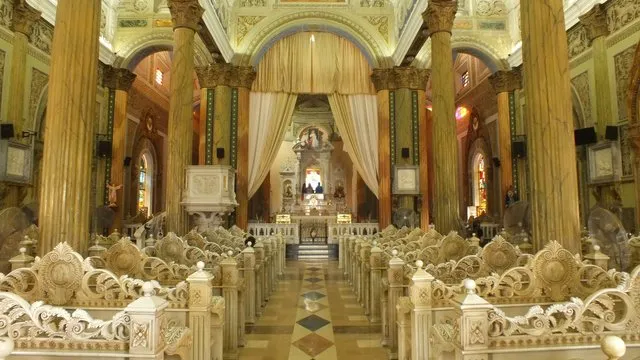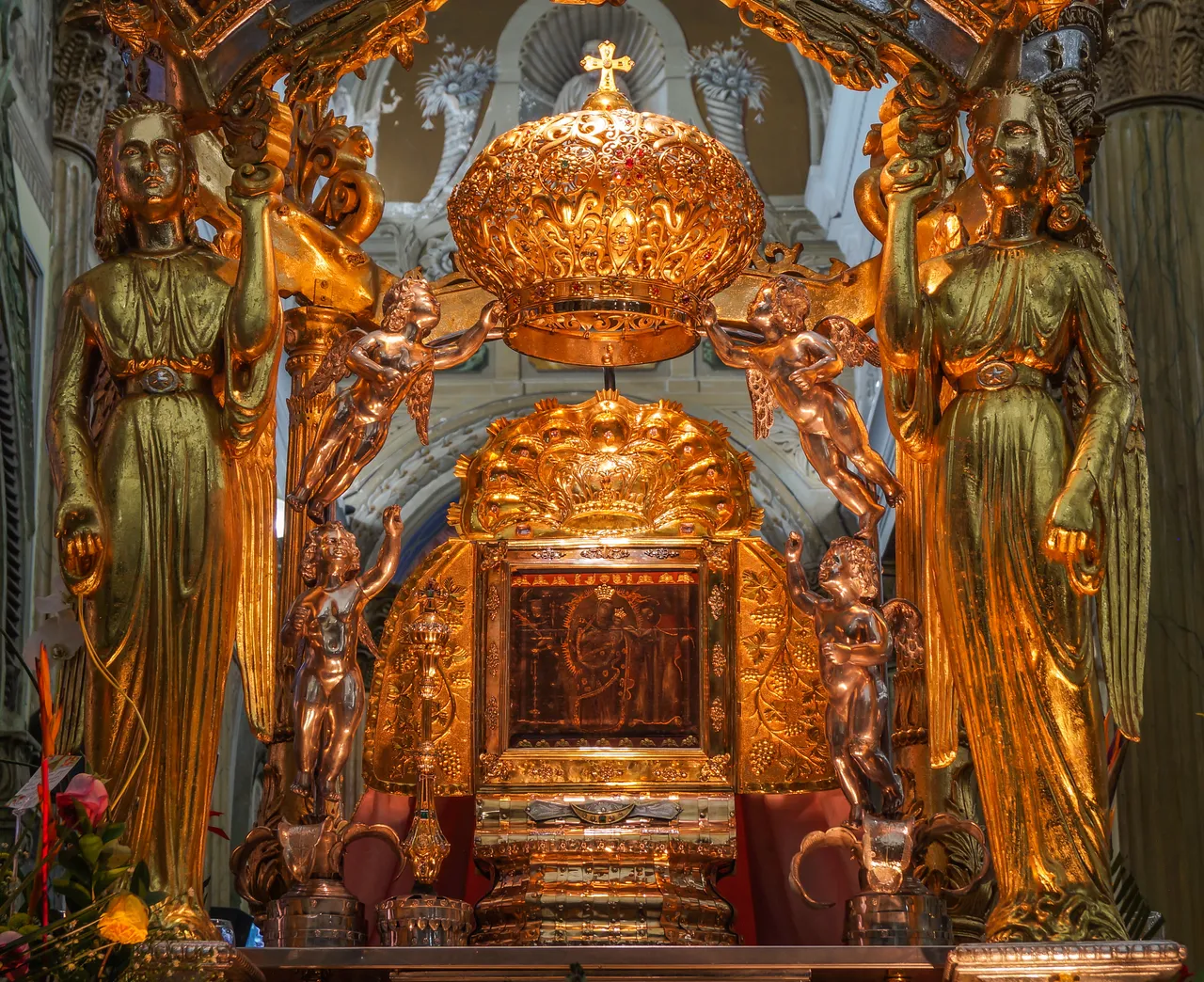
Source
This architectural work together with the Bridge over the lake are the most representative of the State of Zulia in Venezuela and together with the lake are the three main icons of the region.
In 1686 Captain Juan de las Nieves Andrade built a hermitage of mud and straw in honor of San Juan de Dios. In 1709 the Virgin of the Chiquinquira makes her appearance in the house of Maria Cardenas, located about 100 meters approximately from the hermitage and this is moved to a brick chapel built to replace the chapel by order of the governor Francisco de la Roche Ferrer three years later, this also endowed the tablita of a silver frame and placed a lamp of the same metal; But given the multitude of people that venerated it, the space became insufficient and the then governor Guillermo Tomás de Roo ordered to demolish it and to build a bigger one, task that was carried out between the years 1717 and 1723.
In 1770 Pedro González de Acuña, who was the church's steward, built the first tower and it would take 88 years for the church to be remodeled.
In 1821 it became a minor basilica thanks to the diligence of Arturo Celestino Alvares, second bishop of Maracaibo, and for 20 years it was remodeled until it was transformed in shape and dimensions to what it is today.
This gave way to the coronation of the Virgin in 1942 in an act officiated by Monsignor Marcos Sergio Godoy and with the presence of high representatives of the Church, civil society, government and the people who venerate her. In that act a crown of 18 carat gold weighing 10 kilos was placed on the Virgin.

Source
This church is located in the central area of the city of Maracaibo, in the area where the populous neighborhood of El Saladillo used to be, on 12th Avenue between 96th and 97th Streets.
Of neoclassicist architectural style, with presence of gothic, baroque and Byzantine features. Its columns are of classic Greek style, its structure has three naves and two towers with bell towers and domes, it also has eight domes on the roofs, a main altar and two smaller ones, a prebisterium and numerous niches dedicated to various saints.
It has three entrances: a main one with three doors and two lateral ones. On both sides of the entrance are the statues of Monsignors Arturo Celestino Álvarez and Marcos Godoy. In the high part in the center is the image of the Virgin of Chiquinquirá and to the sides San Antonio and San Andrés who also appear accompanying her in the small board.
The interior ceiling decorations and frescoes are the work of the painter Pablo Castellani. The marble floors have a capacity for approximately 620 people seated in the pews and a total area of 2129 square meters. It also has in its exterior spaces four rooms, a living room, a dining room and a small square made jointly by Fathers Lucio and Eleuterio Cuevas. In addition, at the back of the house there is a lot that serves as a parking lot and can be used for future expansions.
In the right side garden there is a bust of Father Antonio María Soto and in the left side garden there is a grotto with the apparition of the Virgin.
This work was declared a national historic monument on August 2, 1960. Its official name is The Basilica of Our Lady of Chiquinquirá.

Source
